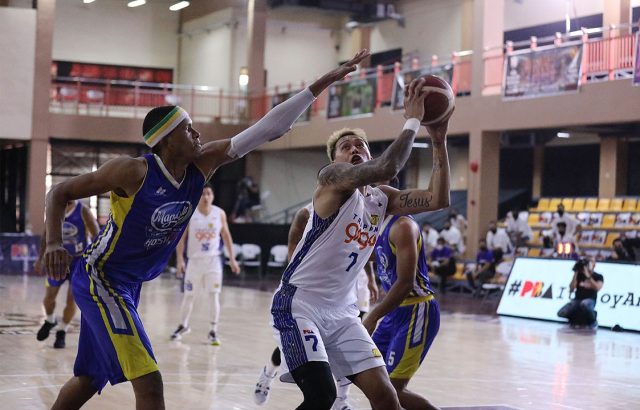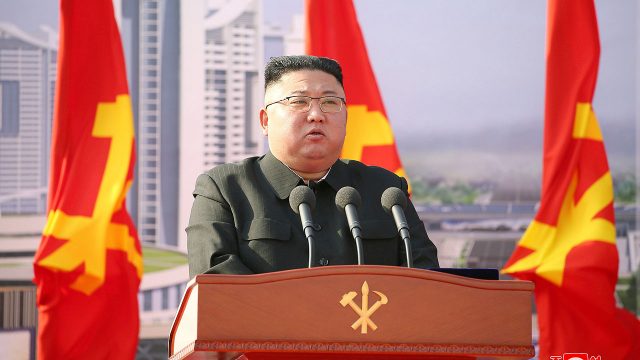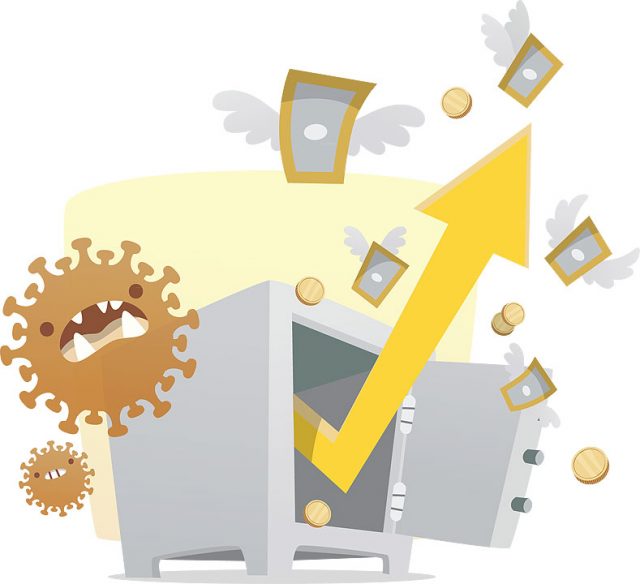(Part 4)
We have the potential to become an advanced economy by the year 2050. Our strong fundamentals create the opportunity for us to belong to the First World some 30 years from now. Such an achievement, however, will not be handed to us on a silver platter. We have to work for it by removing some formidable obstacles, some of which we have discussed in the three previous articles. In this final part of the series, we shall discuss the other major obstacles that we have to surmount.
Among the remaining ones is the very high electricity prices. This has to do with the Industrial Revolution 2.0 which was the Electrical Revolution, which the Philippine still has to complete before we can fully benefit from the much-vaunted Industrial Revolution 4.0. Electricity prices in the Philippines are among the highest in Southeast Asia and are considered relatively high compared to global standards, at roughly $0.20 per KWh, owing mostly to our heavy reliance on imported fossil fuels and uncompetitive market structures. Among the renewable energy sources available in the country, geothermal is shown to be the cheapest and most economically attractive, followed by wind, hydropower, and lastly solar PV.
In a Market Intelligence Report of the International Trade Administration of the US, it was pointed out that the Philippines is already facing a mounting energy crisis as the Malampaya gas fields, supplying 30% of Luzon’s energy consumption, are expected to be depleted by 2024. The Government has stated that it envisions the Philippines as being energy self-sufficient, utilizing a combination of fossil fuels and renewable energy resources. About 43 GW of additional capacity will be required by 2040. The country is already clearly behind schedule in developing these solutions. The current (2020) energy mix is composed of coal (47%), natural gas (22%), renewable energy (hydro, geothermal, wind, solar; 24%) and oil-based (6.2%) with current energy capacity of 230 GW. While there are aspirational statements about having more clean energy, the Government continues to face the dilemma of clean energy vs. lowering the price of electricity. There are no penalties or incentives in place for utilizing different types of energy sources. Another problem is that the current grid cannot accommodate any additional input.
A favorable development is that practically all the leading business conglomerates in the country (San Miguel Corp., the DMCI group, First Pacific, the Aboitiz group, the Ayala group, Ricky Razon’s ICTSI, the Metro Bank group, the Gotianuns, and others) are heavily invested in power plants to increase the supply of electricity. The not so positive development is that the vast majority of them are still constructing or operating coal-powered plants, with the notable exception of the Ayala Energy Corp. that is taking a long-term view that eventually the price of solar energy will decline significantly.
In a report issued by Mordor Intelligence in 2021, it was estimated that the solar energy market in the Philippines is expected to grow at a compound annual growth rate of 13.40% during the forecast period of 2020-2025. As the economy recovers from the pandemic and resumes growth at the pace of 6-7%, starting in the second semester 2022, the solar market is expected to garner more support from the government. The solar PV market is expected to register significant growth due to increasing small-scale solar PV deployment. It is estimated that replacing/integrating diesel generation with renewable energy, like solar, can save the Philippines over $200 million per year.
Small islands in the Philippines are powered by generator-based mini-grids, which are fueled by imported diesel and bunker (freighter) oil. Furthermore, because of factors such as grid instability, inadequate generation capacity, and lack of subsidized fuel, these islands (many of which are very attractive tourist destinations) suffer from blackouts and unplanned power outages. Therefore, off-grid electrification through renewable energy sources such as solar is expected to create significant opportunity in the near future. Falling photovoltaic system prices are expected to drive the market in the next five to 10 years.
Another major obstacle to sustainable and inclusive growth is the long-standing culture of corruption and poor governance in the Philippines. This was accented during the last year of the presidential term of President Duterte, some of whose close aides and allies were accused of having unethically benefited from large health supplies contracts. In an article for Rappler (Sept. 16), Geronimo Sy, former Assistant Secretary of the Department of Justice, explained the ramifications of the case of a business enterprise called Pharmally that bagged a total of P8.7 billion in contracts under very suspicious circumstances. In his words, “More than price, it is evident that Pharmally is a favored bidder. The red flags are: One, it was very recently incorporated in 2019. Two, it is severely capitalized. Three, there is no verifiable address. Four, it has no regular operations as an ongoing concern with big contracts. Five, it has no record of performance. Six, its connection with Mr. Yang (former economic adviser of President Duterte) and the latter’s connection in the executive department which controls procurements. In ordinary days, it is egregious to waste taxpayers’ money. In pandemic life, it is beyond criminal. Investigating overpriced face masks and face shields in a systematic manner can lead to answers that will correct anomalies, punish the guilty, and make justice prevail. And may the heavens forbid uncovering overpricing in the procurement of scarce, saving vaccines by those destined for hell.”
Cases like this in a government that started with the hypocritical promise to eradicate corruption explain why the Philippines ranks very low in the Global Index on Corruption Perception of Transparency International (TI). In TI’s 2020 Corruption Perception Index, the Philippines retained its low score of 34 out of 100 possible points, but slipped two notches down in the ranking from the previous year, with its “mostly stagnant” response and policies against corruption. The Philippines, in the 2019 Corruption Perception Index, landed in the 113th spot from the previous rank of 99 in 2018 after sliding 14 notches very much already at the height of the Duterte Administration. According to TI, “With a score of 34, efforts to control corruption in the Philippines appear stagnant since 2012. The government’s response to COVID-19 has been characterized by abusive enforcement and major violations of human rights and media freedom.” In the ASEAN, the Philippines outranked Laos, Myanmar, and Cambodia but remained below Thailand, Vietnam, Indonesia, Timor-Este, Malaysia, Brunei Darussalam, and Singapore.
Our continuing inability to address corruption, which diverts huge amounts of money from economic development efforts, will surely make it more difficult for the country to attain advanced economy status in the next 25 to 30 years. It will especially be incumbent on the millennials and centennials of today to continue the campaign to improve good governance in both the public and private sectors.
The consoling fact is that a country like South Korea has attained advanced economy status even if it has not entirely eradicated corruption. What matters most are the appropriate economic policies and programs that the country will pursue in the coming decades. More concretely, with significant improvements in good governance, the Philippines may be able to attain advanced economy status much earlier than 2050.
Lastly, a serious challenge to our achieving advanced economy status in the coming quarter of a century or so is our lack of preparedness for natural calamities which are becoming more frequent and deadly with climate change. In a report of the World Meteorological Organization (WMO), the Philippines accounts for 75% of all deaths caused by weather, climate, and water hazards in the Southwest Pacific region during the past 50 years. Because of the location of the Philippines relative to the Pacific Ocean, it faces the brunt of extreme weather and climate change. It is devastated by an average of 20 typhoons annually. The WMO identified Yolanda, the typhoon that battered Eastern Visayas in November 2013 as the deadliest during the five-decade period. It killed more than 7,300 people, a number that is considered conservative by survivors. I personally witnessed the aftermath of Yolanda because I was in Tacloban to be among those who welcomed Pope Francis in January 2015.
It is important that the Philippine Government increase its efforts both at the national and local government levels to strengthen disaster risk management. In a report of the Asian Development Bank on May 4, 2021, six lessons were identified from The Integrated Disaster Risk Management Fund (IDRM Fund):
1. Enhanced risk identification and analysis;
2. Increased investment in disaster risk reduction;
3. Improved access to disaster risk finance;
4. Scaling up of community-based and gender-focused approaches;
5. Increased regional cooperation on IDRM; and,
6. Enhanced knowledge and tools for IDRM.
The Administration that will be in place after the elections in May 2022 should address especially the last point, enhanced knowledge. The ADB organized a forum for local and central government officials from the Philippines-supported recovery efforts from Typhoon Yolanda in 2013, including the exchange of regional and international best practices. The exercise underlined the importance of disaster recovery planning, especially relating to land use, disaster risks assessment, and ease of access to disaster risk information. Post-disaster recovery, based on a strategic framework with a clear institutional setup and coordination mechanism, should be commenced while relief is ongoing to reduce the overall fiscal burden of a disaster. In fact, it is highly recommended that a large portion of the additional funding that will be available to LGU officials under the Mandanas-Garcia ruling should be invested in disaster risk reduction, especially in the most vulnerable regions.
Let me end on a personal note this overly ambitious attempt to prognosticate what it will take for the Philippines to realize its potentials of becoming an advanced economy by the year 2050. I would like to address my 26 (and counting) grandnieces and grandnephews — millennials and centennials — who, from the actuarial point of view, will, God willing, be still around in the year 2050. They are part of our most valuable asset, a young, growing and English-speaking population. Whether or not they are residing in the Philippines (a good number of them are in Canada), they can participate in the efforts enumerated in this series of articles about what will be required for the Philippines to live up to the forecast of the Hongkong and Shanghai Banking Corp. that by 2050, the Philippines will be the 16th largest economy in the world. Let me directly address them by name, in the order of their birth: Kyle, Maxine, Javier, Alexandra, Nicola, Joaquin, Seve, Isabel, Jaime, Miguel Villegas, Jose, Monica, Christian, Leandro, Leia, Natalia, Carmen, Francesca, Alvaro, Lily, Camila, Lucia, Sophia, Miguel Claro, Xander, and Nico. Please keep a record of this article (and if possible, the previous ones) so that in 2050, when I will no longer be in this world, you will remember your grand-uncle who dreamed big about our beloved Philippines. And thank you parents for the gift of life that they generously gave you so that you came to this world at a time when our country finally achieved the status of an advanced economy, an aspiration that we — the Baby Boomers and Generation X — failed to accomplish.
Bernardo M. Villegas has a Ph.D. in Economics from Harvard, is professor emeritus at the University of Asia and the Pacific, and a visiting professor at the IESE Business School in Barcelona, Spain. He was a member of the 1986 Constitutional Commission.
bernardo.villegas@uap.asia











